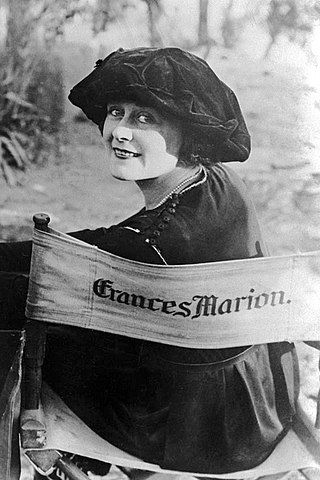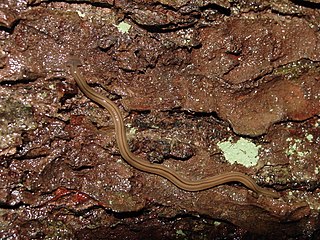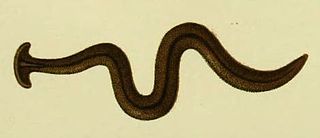
Earl of Warwick is one of the most prestigious titles in the peerages of the United Kingdom. The title has been created four times in English history, and the name refers to Warwick Castle and the town of Warwick.

Drayton Beauchamp is a village and civil parish within Aylesbury Vale district in Buckinghamshire, England. It is in the east of the county bordering Hertfordshire, about six miles from Aylesbury and two miles from Tring.

The Turbellaria are one of the traditional sub-divisions of the phylum Platyhelminthes (flatworms), and include all the sub-groups that are not exclusively parasitic. There are about 4,500 species, which range from 1 mm (0.039 in) to large freshwater forms more than 500 mm (20 in) long or terrestrial species like Bipalium kewense which can reach 600 mm (24 in) in length. All the larger forms are flat with ribbon-like or leaf-like shapes, since their lack of respiratory and circulatory systems means that they have to rely on diffusion for internal transport of metabolites. However, many of the smaller forms are round in cross section. Most are predators, and all live in water or in moist terrestrial environments. Most forms reproduce sexually and with few exceptions all are simultaneous hermaphrodites.

Frances Marion was an American screenwriter, director, journalist and author often cited as one of the most renowned female screenwriters of the 20th century alongside June Mathis and Anita Loos. During the course of her career, she wrote over 325 scripts. She was the first writer to win two Academy Awards. Marion began her film career working for filmmaker Lois Weber. She wrote numerous silent film scenarios for actress Mary Pickford, before transitioning to writing sound films.

The New Zealand flatworm is a large land flatworm native to New Zealand. It can vary from 5 mm in length when hatched to approximately 17 centimetres (6.7 in) in mature adults.

The titles Baron Beauchamp and Viscount Beauchamp have been created several times throughout English and British history. There is an extant Viscountcy of Beauchamp, held by the Seymour family, Marquesses of Hertford.

Film Booking Offices of America (FBO), registered as FBO Pictures Corp., was an American film studio of the silent era, a midsize producer and distributor of mostly low-budget films. The business began in 1918 as Robertson-Cole, an Anglo-American import-export company. Robertson-Cole began distributing films in the United States that December and opened a Los Angeles production facility in 1920. Late that year, R-C entered into a working relationship with East Coast financier Joseph P. Kennedy. A business reorganization in 1922 led to its assumption of the FBO name, first for all its distribution operations and ultimately for its own productions as well. Through Kennedy, the studio contracted with Western leading man Fred Thomson, who grew by 1925 into one of Hollywood's most popular stars. Thomson was just one of several silent screen cowboys with whom FBO became identified.

Dugesia is a genus of dugesiid triclads that contains some common representatives of the class Turbellaria. These common flatworms are found in freshwater habitats of Africa, Eurasia, and Australia. Dugesia is best known to non-specialists because of its regeneration capacities.

Line Beauchamp is a Canadian politician. She served as the Liberal Member of the National Assembly (MNA) for the Sauvé riding, and for Bourassa-Sauvé at the Quebec National Assembly from November 30, 1998 to May 14, 2012. She also served as Minister of Culture and Communications from April 29, 2003 to April 18, 2007, Minister of Sustainable Development, Environment and Parks from April 18, 2007 to August 12, 2012, and served as Minister of Education, Recreation, and Sports from August 11, 2010, and as Deputy Premier of Quebec from September 7, 2011, until she resigned on May 14, 2012 as a result of the 2012 Quebec student strike.

Geoplanidae is a family of flatworms known commonly as land planarians or land flatworms.

Bipalium is a genus of large predatory land planarians. They are often loosely called "hammerhead worms" or "broadhead planarians" because of the distinctive shape of their head region. Land planarians are unique in that they possess a "creeping sole", a highly ciliated region on the ventral epidermis that helps them to creep over the substrate. Native to Asia, several species are invasive to the United States, Canada, and Europe. Some studies have begun the investigation of the evolutionary ecology of these invasive planarians.

Platydemus manokwari, also known as the New Guinea flatworm, is a species of large predatory land flatworm.

Bipalium kewense, also known as the shovel-headed garden worm, is a species of large predatory land planarian with a cosmopolitan distribution. It is sometimes referred to as a "hammerhead flatworm" due to its half-moon-shaped head, but this name is also used to refer to other species in the subfamily Bipaliinae.

Bipalium adventitium, the wandering broadhead planarian, is a land planarian in the subfamily Bipaliinae. It has been accidentally introduced in the United States, where it is considered invasive.

Dendrocoelidae is a family of freshwater tricladida flatworms that has a holarctic distribution.

The Chancellor of the Order of the Garter is an officer of the Order of the Garter.

Bipalium pennsylvanicum, the three-lined land planarian, is a species of land planarian in the subfamily Bipaliinae. They are native to Asia, but found mostly in Pennsylvania and the surrounding areas. They can reach a length of 5.1 inches (130 mm) or more, with a diet consisting mostly of earthworms. They reproduce sexually by creating a cocoon in the spring, but unlike related planarians, they cannot reproduce through binary fission. It is not recommended to touch these flatworms without gloves, because their mucous contains a toxin that is used for digesting prey and can cause skin irritation for some people.
Novibipalium is a genus of land planarians of the subfamily Bipaliinae.

Humbertium is a genus of land planarians of the subfamily Bipaliinae.

Diversibipalium is a genus of land planarians of the subfamily Bipaliinae. It was erected to include species lacking sufficient morphological information to allow them to be classified in the appropriate genus.



















